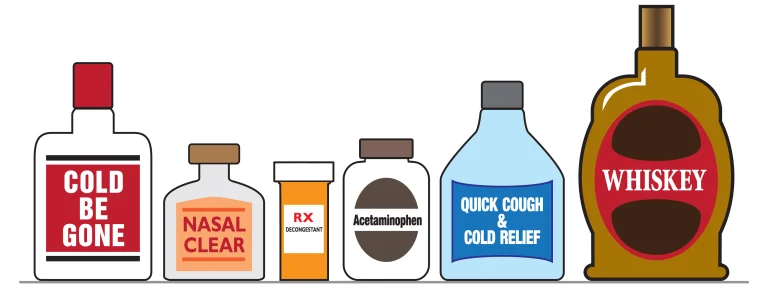Dopamine is a key player in the brain’s reward system and is involved in motivating behavior and reinforcing positive experiences. In addition to pleasure and reward, dopamine also plays a role in motor control, with imbalances in dopamine levels being linked to movement disorders such as Parkinson’s disease. Furthermore, dopamine has been implicated in cognitive processes such as attention, learning, and decision-making. Overall, dopamine serves as a crucial neurotransmitter in regulating various vital functions within the brain and body.
By definition and function, dopamine is a neurotransmitter. It is the brain and the body’s chemical messenger, transmitting messages from one nerve cell to another. Essentially, dopamine functions include the regulation of various biological functions, such as mood, movement, memory, and focus. It is often associated with pleasure and reward, as dopamine release by the brain leads to a pleasurable experience.
Aside from regulating biological functions, another primary role of dopamine is controlling mood, motivation, and emotional responses. At normal levels, dopamine also promotes feelings of happiness and contentment. More importantly, it is also responsible for regulating movement and motor control. On the other hand, when the dopamine system becomes imbalanced, problems with the body occur.
Interestingly, one substance that can increase dopamine levels is amphetamine, a psychoactive drug most famously found in medications used to treat ADHD and narcolepsy. Understanding the science behind these chemicals in the body can help us better appreciate the complexities of our brain and how different substances can influence our behavior and well-being. So, let’s dive in!
Importance of Dopamine in System: What It Can Do?

As discussed above, dopamine is a crucial neurotransmitter that plays a pivotal role in controlling a wide range of bodily functions, including emotions, mood, appetite, sleep, cognitive function, and movement control. The dopamine system is composed of a group of nerve cells originating in the midbrain and plugging into certain functions in the forebrain.
One of the most popular functions of dopamine is allowing us to experience satisfaction, pleasure, and motivation. When activated, the brain’s reward pathways release dopamine, which promotes feelings of euphoria and reinforces pleasurable experiences. This system also plays a integral role in learning, enabling us to associate rewarding stimuli with pleasurable experiences.
Additionally, dopamine is intimately involved in regulating cognitive function, enhancing the efficiency of certain forms of thinking and working memory. It promotes concentration and helps us learn and remember information efficiently. Similarly, dopamine is involved in mood regulation and helps balance emotional responses.
The dopamine system is organized into three primary branches:
- First branch
Modulates cognitive function and enhances working memory, attention, and flexibility in thinking.
- Second branch
Facilitates movements and is implicated in Parkinson’s disease, affecting body movement and coordination.
- Third branch
Plays a vital role in generating pleasurable experiences and promoting feelings of satisfaction, motivation, and desire. Responsible for the brain’s “reward center.”
Dopamine and Mental Health
As a neurotransmitter, dopamine affects the brain and body in various ways. It influences motivation, pleasure, and reward processing, making it a crucial component of the brain’s reward system. When dopamine levels are low, this can lead to addiction and other unhealthy responses to rewards. This link to addiction is particularly noteworthy as it highlights dopamine’s role in creating and reinforcing habits, making it critical to maintain a healthy balance of this neurotransmitter in the brain.
Ultimately, it is important to maintain a safe level of dopamine in system to ensure a healthy mental well-being. Everyone should learn how to increase it since dopamine deficiency can lead to a range of mental health challenges.
Dopamine and the Stress Response Hormones

Dopamine, along with other hormones such as epinephrine and norepinephrine, plays a crucial role in the body’s stress response. When the body senses a threat or danger, the hypothalamus then sends quick signals to the adrenal glands to release these hormones into the bloodstream. The release of these hormones triggers the body’s fight-or-flight response, preparing the body to either stand and fight or run away. In addition, research suggests that dopamine can increase the body’s ability to respond to stress.
How to Naturally Increase Dopamine
Dopamine deficiencies are considered a severe problem, especially in mental well-being. Luckily, there are several uncomplicated and effective ways to naturally increase dopamine levels in your body. Explore some effective ways below:
1. Eat lots of protein
If you want to easily increase your dopamine levels, it’s important to focus on the building blocks of this neurotransmitter. Dopamine is made from two amino acids—tyrosine and phenylalanine—which are commonly found in protein-rich foods.
Eating lots of protein can help ensure your body has enough essential amino acids to produce dopamine. Beef and turkey are excellent sources of both tyrosine and phenylalanine, making them a great choice for those looking to increase their dopamine levels.
Other protein-rich foods that are good sources of these amino acids include eggs, dairy products, soy, and legumes. Including such foods in your daily diet can help to support optimal dopamine production.
2. Consume less saturated fat
Saturated fat has been known to interfere with dopamine signaling in the brain, potentially leading to a decrease in dopamine levels. However, consuming less saturated fat can help to support healthy dopamine levels and promote general brain health. Here’s how to do it:
- Choose lean cuts of meat
- Opt for skinless poultry
- Go for low-fat dairy products, such as skim milk, low-fat yogurt, or low-fat cheese
- Incorporate plant-based proteins, such as beans, lentils, and tofu
- Choose avocado or olive oil instead of butter or margarine
- Avoid processed foods
3. Get enough sleep
Getting enough sleep is crucial for regulating natural dopamine rhythms in the brain. Also, it is essential for overall health and well-being and can help regulate mood, cognitive function, and other important biological functions.
Here are some easy-to-follow tips to guide you in establishing healthy sleep habits and optimizing your sleep environment:
- Establish a consistent sleep schedule: wake and sleep at the same time every single day. It should remain consistent even on weekends
- Create a relaxing bedtime routine
- Avoid caffeine in the evening
- Invest in comfortable bedding
- Optimize your sleep environment
4. Take probiotics
Several studies have investigated the link between probiotics and mood. One study found that when consumed in large enough quantities, certain strains of bacteria can lessen symptoms of anxiety and depression. Another study showed that probiotic supplementation led to changes in brain activity related to emotional processing in healthy women.
5. Get enough sunlight
Sunlight exposure plays a crucial role in boosting dopamine levels in the brain and improving mood. Research has shown that sunlight exposure can lead to an increase in dopamine release, which can help improve mood and well-being. Exposure to natural sunlight can also help regulate the body’s circadian rhythm, which is important for maintaining a healthy sleep cycle.
Even though sunlight exposure is important and beneficial, it is an important reminder to adhere to safety guidelines to avoid skin damage and possibly habit-forming behavior. Ideally, safe sun exposure is between 10 am and 4 pm. This is when the sun’s rays are at their weakest. Using sunscreen is also highly recommended. That’s why moderation is key to avoiding overexposure and maintaining healthy skin.
6. Exercise regularly
Regular exercise is naturally good for both body and mind. It has been proven to boost dopamine levels, a neurotransmitter critical to the brain’s reward and pleasure center. Regular exercise can help stimulate dopamine production, leading to a better mood, increased motivation, and overall well-being.
Different types of exercise can affect dopamine production in various ways. Aerobic exercises like running and cycling have been shown to increase dopamine levels and enhance dopamine signaling in the brain. This effect may be because of the release of endorphins, also known as the body’s natural painkillers and mood enhancers. Anaerobic exercises like weightlifting can also stimulate dopamine production, albeit to a lesser extent.
The amount of exercise needed to see noticeable effects on dopamine levels varies from person to person. However, research suggests that moderate-intensity exercise for at least 30 minutes a day and three to five times a week can be sufficient to boost dopamine production and improve mood.
7. Listen to music
Listening to music is a fantastic way of relaxing and unwinding since it can provide musical pleasure. At the same time, the routine also plays a significant role in increasing dopamine levels naturally. Whether it’s instrumental or choral music, this pleasurable experience can stimulate the reward and pleasure areas of the brain, resulting in a boost of dopamine production. As such, incorporating music into your daily routine may benefit your overall physical and mental health.
8. Meditate
Research has shown that meditation can boost dopamine levels in the brain, improving both mental and physical health. A study completed at the National Institutes of Health found that an hour of meditation led to a 65% increase in dopamine production. This increase in dopamine production can help maintain a positive mood and motivation, as well as improve cognitive function and physical health.
Besides the dopamine-boosting effects, meditation has other mental and physical health benefits. It has been found to lessen symptoms of anxiety and depression, enhance sleep quality, and lower stress levels. It can also help in managing chronic pain and reducing blood pressure. Hence, improvement in overall well-being.
9. Consider taking supplements
Consider taking supplements to increase dopamine levels in the brain. Several vitamins and minerals are required for dopamine production, and deficiencies in these nutrients can lead to decreased dopamine levels. By supplementing with the right nutrients, dopamine production can be supported and increased.
Several supplements have been linked to increased dopamine levels. Magnesium, for example, is an essential mineral that plays a crucial role in producing and releasing dopamine. Similarly, vitamin D is important for dopamine synthesis and has been revealed in some studies to increase dopamine levels. Curcumin, oregano extract, and green tea have also been linked to increased dopamine levels, though more human research is needed in this area.
Ultimately, specific supplements have unique potential benefits to offer. That’s why consultation with a professional is a must.
The Connection Between Dopamine and Amphetamines

Dopamine and amphetamines are closely linked due to the way amphetamines affect the brain’s dopamine pathways. Dopamine can affect several biological functions, including motor control, cognitive function, and the regulation of mood and reward. Hence, dopamine is indeed a vital neurotransmitter.
On the other hand, amphetamines increase the amount of dopamine in the brain. They do this by entering the nerve cells and altering the dopamine release from these cells. When amphetamines enter the bloodstream, they cross the blood-brain barrier and interact with the ventral tegmental area, significantly increasing dopamine release.
Moreover, the duration of amphetamines in the system depends on several factors, including the dose, purity, method of administration, and the individual’s metabolism. While amphetamines can have short-term positive effects on the brain, long-term use can lead to addiction, damage to the brain’s reward system, and other physical and mental illnesses.
Furthermore, the repeated stimulation of the reward system by amphetamines can result in desensitization to natural rewards like food and sex, leading to a decrease in the levels of dopamine and other neurotransmitters. This can cause persistent feelings of depression and anxiety, even after the individual stops using amphetamines.
The Effects of Amphetamines on the Brain and Body

Amphetamines are a class of stimulant drugs commonly used to treat different medical conditions, including attention deficit hyperactivity disorder (ADHD) and narcolepsy. They can also be used recreationally to enhance alertness and productivity. As discussed above, amphetamines can increase dopamine levels in the brain. Besides that, short-term effects of amphetamines include increased energy, decreased appetite, and increased heart rate. These effects can be beneficial for individuals with ADHD but can also be addictive and dangerous when used outside of a therapeutic context.
On the other hand, chronic use of amphetamines can result in a range of negative side effects, including addiction, psychosis, and cardiovascular problems. Over time, the brain may become tolerant to the effects of amphetamines, requiring higher doses to achieve the same level of pleasure and reward. This can lead to dependence and withdrawal symptoms when the drug is discontinued. All in all, amphetamines are undeniably beneficial as long as they are not misused.
Different Testing Methods: Discovering How Long Do Amphetamines Stay in Your System?
If you’ve used amphetamines, you may be wondering about how long they stay in your system and how they can be detected. Well, the length of time that amphetamines stay in your system relies on several factors, including the dose, method of administration, and frequency of use. Commonly used testing methods include urine, blood, hair, and saliva tests. Ultimately, testing for amphetamines is crucial in identifying drug abuse and preventing harmful consequences.
Blood Tests
Blood tests are typically used to detect the presence of amphetamine in the bloodstream for both prescribed use and abuse. Generally, amphetamines can be detected in the blood for up to 12-24 hours after use.
Blood tests provide an accurate way to measure amphetamine levels in the bloodstream. This test helps to differentiate between methamphetamine and amphetamine. While methamphetamine stays in the plasma for up to six hours, amphetamine leaves the bloodstream within a few hours. A blood test can identify if the person’s blood contains more methamphetamine, which is commonly associated with abuse, than amphetamine.
Compared to other testing methods, blood tests are considered more reliable. In fact, blood tests can detect even small amounts of amphetamine in the bloodstream. The only reason why blood tests are not the best for some situations is because they can be expensive as they require medical professional extraction.
Saliva Tests
Saliva tests are a noninvasive method of detecting the presence of amphetamines in an individual’s system. Unlike blood tests, saliva tests require no needle insertions and can provide results that indicate usage from 24 to 48 hours after intake. Amphetamines can be detected in saliva for up to 1-3 days after use. However, detection time may be shorter for infrequent or low-dose users.
One of the major benefits of saliva tests is that they are less intrusive and can be administered easily and quickly. Moreover, they are highly sensitive to the parent drug, which means that the drug can be identified in its original form. Yet, it is necessary to understand that the presence of blood in oral fluid samples can compromise the accuracy of the results obtained from saliva tests. Thus, additional testing through blood or urine may be required to verify the test results.
Generally, saliva tests have potential limitations, such as possible insufficiency regarding saliva collection, which can lead to inaccurate or inconclusive results. Adding to that difficulty in results is the fact that amphetamines can be taken in various ways—orally, intranasally, or via injection—which cause varying effects for most amphetamines.
Urine Tests
Urine tests are commonly used to detect amphetamines in a person’s system. Generally, amphetamines can be detected in urine for up to 2-4 days after use. However, heavy or chronic use may extend the detection window to up to 7 days. Here are the key aspects to take into account when conducting urine tests for amphetamines:
1. Detection Time
The duration that amphetamines stay in a person’s urine varies depending on a range of factors. These determining factors include the frequency of use, the metabolism rate, and the amount of drug used. Typically, amphetamines can be detected in urine for up to 2-4 days after the last usage.
2. At-Home Tests vs. Lab Tests
At-home amphetamine urine tests are simple, convenient, and provide quick results. Yet, they may not be as dependable and reliable as lab tests, which are more sensitive and can see even the smallest amounts of the drug in urine. For accurate results, it is best to conduct lab tests under the supervision of a healthcare professional.
3. False Positives
Certain medications—such as cold and flu medicines—together with certain foods—such as poppy seeds—may lead to false positives in amphetamine urine tests. It is essential to disclose any medications or foods consumed before taking the test to avoid false positives.
Overall, urine tests are a common and effective way to detect amphetamines in a person’s system. Yet, it is critical to take into account different factors such as detection time, the reliability of at-home tests versus lab tests, and what can cause false positives in urine tests to ensure accurate results. That’s why consulting a healthcare professional is recommended for reliable and accurate testing.
Hair Tests
Hair tests are a common method of detecting drug use that is becoming increasingly popular, especially for pre-employment screening or legal proceedings. Regarding amphetamines, hair tests are highly reliable as they can detect the presence of these drugs in hair follicles typically for up to 90 days following ingestion. However, drug use may not be detected in hair until 7-10 days after use.
The process of drugs traveling from the bloodstream to the hair follicles is known as drug incorporation, which is influenced by individual hair characteristics. Once amphetamines enter the bloodstream, they travel to the hair follicle via the capillaries that supply the hair root. The process of drug incorporation into the hair is gradual, and therefore, the concentration of drugs in the hair may vary depending on the individual’s hair growth rate.
Ultimately, hair tests are potentially the most reliable tests for detecting prior use of amphetamines. They allow for a longer detection window than other drug tests, such as urine tests, and provide more accurate results. The only flaw is that hair tests cannot provide information on drug use frequency or quantity. Nonetheless, it is undeniable that they remain a valuable tool in detecting prior use of amphetamines in situations requiring high accuracy and reliability.
Frequently Asked Questions
Recently, there has been increasing curiosity about the interaction between dopamine and amphetamines. This has led to many frequently asked questions about it and other related topics. Explore some of the questions below.
Final Thoughts
Surely, the study of dopamine in the brain is a fascinating and intriguing area of research that has the power to give light and understanding of a wide variety of biological functions. Whether exploring its role in reward processing and addiction, motor control, or neuroscience more broadly, dopamine remains an important area of study for researchers and clinicians alike. That’s why it is advantageous to understand dopamine in system and its connection to amphetamines, especially if you want to maintain your regulated mood and emotional responses.
Now, if a loved one or it is you who needs help regarding addiction, remember that Costa Rica Treatment Center is here to help. Don’t hesitate to ask for help. Know that no one should feel alone battling addiction. Get a free evaluation today.








